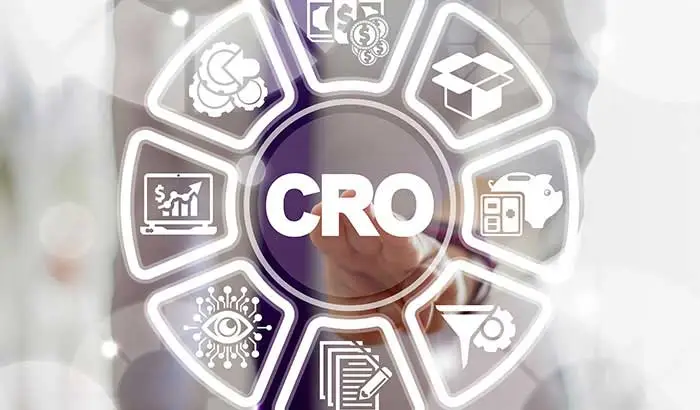If you’re running a business or a website, you’re likely familiar with Conversion Rate Optimization (CRO). CRO is a powerful tool that helps you improve the effectiveness of your website or online presence, and it can significantly impact your bottom line. But creating a successful CRO strategy can be challenging, especially if you’re new to digital marketing.
Key elements of a successful CRO strategy include understanding your audience, setting clear goals, conducting thorough research, creating compelling content, and regularly testing and optimizing your website. By focusing on these elements, you can create a data-driven approach to CRO that improves your website’s user experience, increases engagement, and drives more conversions.
In this article, we’ll explore the key elements of a successful CRO strategy that can help you maximize your website’s potential and drive more conversions. Whether you’re a seasoned marketer or just starting out, these tips will give you a solid foundation for creating a CRO strategy that works for your business.
Understanding CRO Compared to SEO
Before we dive into the different CRO strategies, it’s essential to know the difference between CRO and SEO.
CRO and SEO are two distinct but complementary strategies that you can use to drive traffic and improve your website’s performance. While CRO focuses on optimizing the user experience and improving conversion rates, SEO focuses on optimizing your website for search engines and improving your visibility in search results.
CRO involves analyzing user behavior, identifying areas of improvement, and making changes to your website to improve the user experience and drive more conversions. This might include simplifying the checkout process, creating targeted landing pages, or improving site speed and load times. By making these changes, you can create a more compelling user experience that drives more conversions over time.
SEO, on the other hand, involves optimizing your website for search engines like Google. This might include identifying and incorporating relevant keywords into your website content, building high-quality backlinks, and ensuring that your website is mobile-friendly and has fast load times.
Optimizing your website for search engines can improve your visibility in search results and drive more traffic to your website.
Using CRO and SEO Together
One key benefit of combining CRO and SEO is that they both involve data-driven decision-making. By analyzing user behavior and search engine data, you can identify opportunities for improvement and make data-driven decisions about optimizing your website for both users and search engines.
Ultimately, both CRO and SEO are essential components of a successful digital marketing strategy. By focusing on user experience and search engine optimization, you can create a more effective website that drives more traffic, engagement, and conversions over time.
Okay, let’s now dive into CRO!
- Understanding Your Audience
When it comes to CRO, understanding your audience is paramount. With a clear understanding of who your target audience is and what they need, it’s easier to create an effective marketing strategy that drives results.
Here are two key ways to better understand your audience:
Conducting Market Research to Identify Your Audience and Find Their Needs
Market research is an essential step in developing a successful CRO marketing strategy. It allows you to identify your target audience, their demographics, and their pain points. By conducting market research, you can better understand your audience’s needs and develop a marketing strategy that speaks directly to those needs.
To conduct market research, start by identifying your target audience. This may involve analyzing data from your website, social media accounts, and other marketing channels to see who engages with your brand. Once you have a clear picture of your target audience, you can use tools like surveys, focus groups, and customer interviews to gather more detailed information about their needs and preferences.
Analyzing Customer Behavior Using Analytics
Another critical element of understanding your audience for CRO is analyzing customer behavior using analytics. Tools like Google Analytics allow you to track user behavior on your website and gather valuable insights into how users interact with your content.
By analyzing user behavior, you can identify areas where users are dropping off or experiencing friction in the conversion process. For example, you may notice that users abandon their shopping carts at a particular point in the checkout process or spend more time on certain pages than others.
These insights can help you decide where to focus your optimization efforts and make changes to improve the user experience.
- Setting Clear Goals
To create an effective CRO strategy, you should set clear goals that align with your overall business objectives. With clear goals, it’s easier to measure the success of your CRO efforts or determine what changes you should make to improve conversion rates.
Here are two critical steps to setting clear goals for your CRO strategy:
What Do You Want to Achieve Through Your Website?
The first step in setting clear goals for your CRO strategy is to identify what you want to achieve through your website. This could be anything from generating leads to increasing sales, but a specific goal should align with your business objectives. Once you’ve identified your main goal, you can start thinking about conversion metrics that will help you measure progress toward that goal.
Identify Measurable Conversion Metric Goals
The second step in setting clear goals for your CRO strategy is identifying measurable conversion metric goals. These are the specific metrics you’ll use to measure the success of your CRO efforts. Some standard conversion metrics include conversion rate, bounce rate, time on site, and revenue per visitor.
When setting metric conversion goals, it’s important to make them specific, measurable, and realistic. For example, instead of setting a goal to “increase conversions,” you might set a goal to “increase the conversion rate by 10% over the next quarter.” Intentional goals give you a specific target to aim for and make tracking progress easier over time.
- Conducting Thorough Research
It’s important to conduct thorough research that helps you identify areas of improvement on your website. By analyzing user behavior and testing different approaches, you can make data-driven decisions that improve conversion rates and drive more sales. Here are two key steps to conducting thorough research for your CRO marketing strategy:
Identify Areas of Improvement on Your Site by Analyzing User Behavior
The first step in conducting thorough research for your CRO marketing strategy is to identify areas of improvement on your website. One way to do this is by analyzing user behavior using tools like Google Analytics. By tracking user behavior, you can identify areas where users are dropping off or experiencing friction in the conversion process.
Once you’ve identified areas for improvement, you can start thinking about ways to address them. This might involve changing your website’s design, copy, or functionality to reduce friction and make converting easier for users.
Use A/B Testing to Determine Impact on Conversion Rates
The second step in conducting thorough research for your CRO marketing strategy is to use A/B testing to determine the impact of different changes on conversion rates. A/B testing involves creating two versions of the same page and testing them against each other to see which one performs better regarding conversion rates.
For example, you might create two versions of your checkout page: one with a longer form and one with a shorter one. By testing these two versions against each other, you can determine which one performs better and make changes to improve conversion rates.
A/B testing can be a powerful tool for improving conversion rates, but it’s crucial to approach it with a clear plan and hypothesis. Before starting an A/B test, ensure you have a clear idea of what you want to test and what you hope to achieve. By taking a strategic approach to A/B testing and using it with other research methods, you can create a data-driven CRO marketing strategy that drives results.
- Creating Compelling Content
Compelling content is an essential element of any successful CRO marketing strategy. You can improve engagement and drive more conversions by developing a clear, unique value proposition and creating high-quality content that speaks to your audience’s pain points.
Here are two key steps to creating compelling content for your CRO marketing strategy:
Develop a Clear, Unique Value Proposition
The first step in creating compelling content for your CRO marketing strategy is to develop a clear, unique value proposition. Your value proposition should communicate what sets your brand apart from the competition and why users should choose your products or services over others. It should be clear, concise, and easy to understand.
To develop a value proposition, start by considering your target audience and what they’re looking for in a product or service. What pain points do they have, and how does your brand solve them? Once you have a clear understanding of your unique selling points, you can start crafting a value proposition that compellingly communicates them.
Create High-Quality Content That Addresses Audience Pain Points
The second step in creating compelling content for your CRO marketing strategy is to create high-quality content that addresses your audience’s pain points. This might include blog posts, product descriptions, or landing page copy that speaks directly to your target audience’s needs and challenges.
When creating content, it’s important to keep your value proposition in mind and ensure that your messaging is consistent across all channels. Your content should be engaging, informative, and provide clear calls to action that encourage users to take the next step.
In addition to creating high-quality content, it’s also important to incorporate visual elements like images and videos that enhance user engagement. By taking a strategic approach to content creation and including various media, you can create a compelling user experience that drives conversions and supports your overall CRO marketing strategy.
- Testing and Organizing
Testing and optimizing are critical elements of any successful CRO marketing strategy. By using A/B testing to optimize conversion rates, tools to automate testing and optimization, and analyzing user feedback, you can create a data-driven approach that continually improves the effectiveness of your website.
Here are three key steps to testing and optimizing your CRO marketing strategy:
Use A/B Testing to Optimize Conversion Rates
As we mentioned above, A/B testing is one of the most important tools when it comes to creating and optimizing content.
Use Tools to Automate Testing and Optimization
Automating testing and optimization can help you save time and improve efficiency in your CRO marketing strategy. Tools like Google Optimize allow you to automate A/B testing and other optimization tasks, making it easier to track progress and make changes that improve conversion rates.
By using tools to automate testing and optimization, you can make data-driven decisions more quickly and efficiently, freeing up time to focus on other areas of your marketing strategy.
Analyze User Feedback and Adjust Strategies
In addition to A/B testing and automation, it’s important to analyze user feedback and adjust your CRO marketing strategy accordingly. This might involve collecting feedback through surveys or customer reviews or tracking user behavior using heat maps and session recordings.
By analyzing user feedback, you can gain valuable insights into how users interact with your website and identify areas for improvement. For example, you might notice that users are confused by a particular feature or have trouble finding what they’re looking for. By making changes to address these issues, you can improve the user experience and drive more conversions.
- Building Trust and Credibility
Building trust and credibility with your target audience is critical to the success of your CRO marketing strategy. By incorporating social proof, ensuring your website is secure and has a clear privacy policy, and creating a transparent refund policy, you can create a user experience that instills confidence and drives conversions.
Here are three key steps to building trust and credibility for your CRO marketing strategy:
Incorporate Social Proof
Social proof is a powerful tool for building trust and credibility with your target audience. It involves showcasing positive reviews, testimonials, and other forms of user-generated content that demonstrate the value of your products or services. By incorporating social proof into your website and other marketing channels, you can create a compelling user experience that inspires confidence and drives conversions.
Ensure Your Website is Secure and Has a Clear Privacy Policy
Ensuring your website is secure and has a clear privacy policy is another essential element of building trust and credibility. Users are increasingly concerned about online security and privacy and are more likely to engage with brands that prioritize these issues.
To ensure your website is secure, prioritize obtaining an SSL certificate and use HTTPS protocols. Additionally, ensure you have a clear privacy policy outlining how you collect and use user data. By prioritizing online security and privacy, you can create a user experience that instills confidence and drives conversions.
Create a Transparent Refund Policy
Creating a transparent refund policy is another way to build trust and credibility with your target audience. A clear and fair refund policy demonstrates that you stand behind your products or services and are committed to customer satisfaction. By creating a transparent refund policy and prominently displaying it on your website, you can create a user experience that inspires trust and confidence.
- Streamlining the Conversion Process
Streamlining the conversion process is critical to any successful CRO marketing strategy. By simplifying the checkout process, using tools to recover lost sales, and optimizing mobile responsiveness, you can create an easy and intuitive user experience, driving more conversions.
Here are three key steps to streamlining the conversion process for your CRO marketing strategy:
Simplify the Checkout Process
The checkout process is a critical point in the conversion process and can often be a barrier to completing a purchase. By simplifying the checkout process, you can reduce friction and make it easier for users to complete a purchase. This might involve removing unnecessary fields, simplifying the layout, or offering multiple payment options.
To simplify the checkout process, it’s important to understand user behavior and identify areas for improvement. By analyzing user behavior using tools like Google Analytics, you can identify where users are dropping off or experiencing friction and make changes to improve the process.
Use Tools to Recover Lost Sales
Even with a streamlined checkout process, some users may still abandon their carts before completing a purchase. To recover these lost sales, you can use tools like abandoned cart emails and retargeting ads that remind users of their abandoned items and encourage them to complete the purchase.
By using these tools, you can create a more personalized user experience that helps move users toward conversion. Additionally, you can use analytics to track the success of these tools and make adjustments as needed to improve conversion rates.
Optimize Mobile Responsiveness to Accommodate All Users
With more users accessing websites through mobile devices, optimizing mobile responsiveness is essential to streamlining the conversion process. This might involve creating a responsive design that adapts to different screen sizes or offering a mobile-specific version of your website that is optimized for smaller screens.
When optimizing mobile responsiveness, it’s important to conduct thorough testing and ensure that your website is easy to navigate and use on mobile devices. By providing a seamless user experience across all devices, you can increase engagement and drive more conversions.
- Utilizing Psychology
Utilizing psychology principles improves the user experience and drives more conversions to your website. By applying psychology principles to enhance user engagement, designing a user experience using behavioral science, and incorporating social influences, you can create a website that is more effective at driving conversions.
Here are three key steps to utilizing psychology for your CRO marketing strategy:
Apply Psychology Principles to Enrouge Conversion
You can use psychology principles to create a more effective user experience that drives more conversions. For example, principles like scarcity and urgency can be used to encourage users to take action, while principles like social proof and authority can be used to build trust and credibility.
To apply psychology principles effectively, you need a clear understanding of your target audience and their preferences. By using data to inform your decisions, you can create a user experience that is more engaging and effective at driving conversions.
Design a User Experience Using Behavioral Science
Behavioral science can be used to design a user experience that is more effective at driving conversions. This might involve using tools like heat maps and user surveys to gain a deeper understanding of user behavior, or using techniques like gamification to encourage engagement and improve the user experience.
By designing a user experience using behavioral science, you can create a website that is more intuitive, engaging, and effective at driving conversions.
Incorporate Social Influences
Social influences can be a powerful tool for improving engagement and driving conversions on your website. For example, incorporating customer reviews and testimonials can help build trust and credibility, while highlighting the popularity of your products can create a sense of social proof.
To incorporate social influences effectively, it’s important to use data to inform your decisions and identify the social influences that are most effective for your target audience. By using social influences strategically, you can create a user experience that is more engaging and effective at driving conversions.
- Incorporating Personalization
Personalization is a powerful tool for improving engagement and driving conversions in your CRO marketing strategy. By using data-driven personalization techniques to deliver relevant content, creating customized landing pages and offers based on user preferences, and using email marketing and retargeting campaigns for personalization, you can create a user experience that is tailored to each individual user, driving more conversions.
Here are three key steps to incorporating personalization into your CRO marketing strategy:
Use Data-driven Personalization Techniques to Deliver Relevant Content
Data-driven personalization involves using user data to deliver content that is relevant and personalized to each individual user. This might involve using tools like website personalization software to deliver customized content based on user behavior or using targeted advertising to deliver personalized ads to different user segments.
To use data-driven personalization techniques effectively, it’s important to have a clear understanding of your target audience and their preferences. By collecting and analyzing user data, you can create a more personalized user experience that drives engagement and improves conversion rates.
Create Customized Landing Pages and Offers Based on User Preferences
Creating customized landing pages and offers based on user preferences is another powerful way to incorporate personalization into your CRO marketing strategy. This might involve creating landing pages that are tailored to specific user segments or offering customized discounts or promotions based on user behavior.
By creating customized landing pages and offers, you can create a user experience that is highly relevant and engaging, driving more conversions over time.
Use Email Marketing and Retargeting Campaigns for Personalization
Email marketing and retargeting campaigns are also effective ways to incorporate personalization into your CRO marketing strategy. Segmenting your email list will help you create a more personalized user experience that drives engagement and improves conversion rates.
When using email marketing and retargeting campaigns, it’s important to take a strategic approach and use data to inform your decisions. By analyzing user behavior and creating targeted campaigns based on user preferences, you can create a highly personalized user experience that drives results.
- Measuring and Analyzing Results
Measuring and analyzing results is a critical element of any successful CRO marketing strategy. By tracking key conversion metrics using specialized tools, analyzing data to identify areas of improvement, and creating regular reports to communicate results, you can create a data-driven approach that continually improves the effectiveness of your website.
Here are three key steps to measuring and analyzing results for your CRO marketing strategy:
Track Key Conversion Metrics Using Specialized Tools
Tracking key conversion metrics is essential to understanding the effectiveness of your CRO marketing strategy. This might involve tracking metrics like conversion rate, bounce rate, and average order value using tools like Google Analytics or specialized CRO software.
By tracking these metrics, you can gain valuable insights into how users are interacting with your website and identify areas for improvement. Additionally, you can use this data to inform future optimization efforts and make data-driven decisions about your marketing strategy.
Analyze Data to Identify Areas of Improvement
Analyzing data is another critical element of measuring and analyzing results for your CRO marketing strategy. By analyzing user behavior and conversion data, you can identify areas of your website that are performing well and areas that need improvement.
When you analyze data, it’s important to take a strategic approach and use tools like heat maps, session recordings, and user surveys to gain a deeper understanding of user behavior. Doing so will allow you can create a more effective CRO marketing strategy that drives more conversions over time.
Create Regular Reports to Communicate Results
Creating regular reports is an important part of measuring and analyzing results for your CRO marketing strategy. Creating reports that communicate key metrics and insights lets you keep stakeholders informed and engaged in the optimization process.
When creating reports, it’s important to keep them clear and concise, focusing on the metrics that are most important to your organization. Additionally, highlight areas of improvement and opportunities for future optimization efforts.
Craft a Killer CRO Strategy With Revity
Are you looking to take your website to the next level with a conversion rate optimization strategy? Look no further than Revity! Our team of experts will work with you to identify pain points and barriers hindering conversions and develop a customized plan to optimize your website for maximum results.
With data-driven decisions and ongoing testing and optimization, we’ll ensure your website delivers an exceptional user experience that drives conversions. Contact us today online or call us at 801-877-3061 to get started and take your website’s performance to new heights!

































